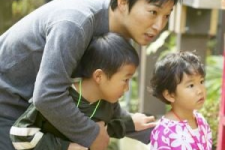GRADUATE Course – Common Core Implementation for All Classrooms
“I learned a great amount from taking the course about effective evaluations. I appreciated the specific examples of how to strategically plan, implement, and monitor student progress to enable mastery of standards in the classroom. Thank you for the attachments and pdf documents for additional classroom resources.”
1 Graduate Credit
Grading: A-F
Materials: Included in the […]
SELF-STUDY: IEPs: Documentation and Implementation for Teachers (5 hours)
“The Individualized Education Program (IEP) is the cornerstone of special education.”
The goal of this course is to help teachers understand the IEP process and build the teachers comfort level in developing, aligning with and carrying out the IEP through rich examples and templates to help teachers understand and practically […]
SELF-STUDY: Reflective Teacher (5 hours)
“ Wonder if your students benefit in any way? ”
Have you wondered if your efforts and hard work are paying off? Have you spent time pondering over whether your teaching strategies are appropriate for your class and reviewing the results?
Developing a process of reflective thinking or reflective practice is […]
What is the Meaning of Splintered Development in Children with Autism?

Children with autism generally have developmental timelines that are out of sync. Each area can have its own path. These developmental timelines include:
Physical
Sensory-Motor (Neuro- Developmental)
Cognitive
Academic
Emotional
Social
When development in any of these areas is out of sync with typical development, these differences can cause perplexing behavior. This is called splintered development.
What is important is that […]
How can we help Children with Autism develop Imagination Skills?

One of the ways people work to develop their mind is through imagination. Very young children do not have a developed imagination but typical toddlers learn that people and things often seem to leave and disappear and then return. For example, when a caretaker leaves, the child generally wonders whether they will come […]
What is the Best Teaching Approach for Bilingual Children?

Contrary to what was once believed, most experts now agree that children do not get “confused” by exposure to one language at school and a different one (or more) at home. It is never recommended to advise English Language Learners (ELLs) or bilingual children and their families to speak only English at home. […]
How do I Teach Children with Autism about the “Big” Picture?

People on the spectrum often have issues with part-to-whole or whole-to-part thinking. This occurs due to defects in the Corpus Callosum, located in the Upper brain.
Many people on the spectrum see and hear the details but cannot see or understand the whole of what is being communicated. So many students with autism can […]
How do I Teach a Student with Autism who has Repetitive Behavior?

Most of the time, repetitive behaviors are attempts by a person’s sensory-motor system to develop control or protection from feeling overwhelmed. Some examples are:
Nick seems to be able to find a piece of string in any environment. Once he has it, he twists and twirls it between his fingers. He seems mesmerized by […]
What are the Causes for Challenging Behaviors in Children?

A student’s behavior is not random but is determined by one or more root causes or behavioral drivers, the most common of which include:
Social attention (adult or peer)
A student may call out sarcastic comments in class because she gets peer attention for doing so.
Escape or avoidance of tasks, settings, or situations
A student who […]




